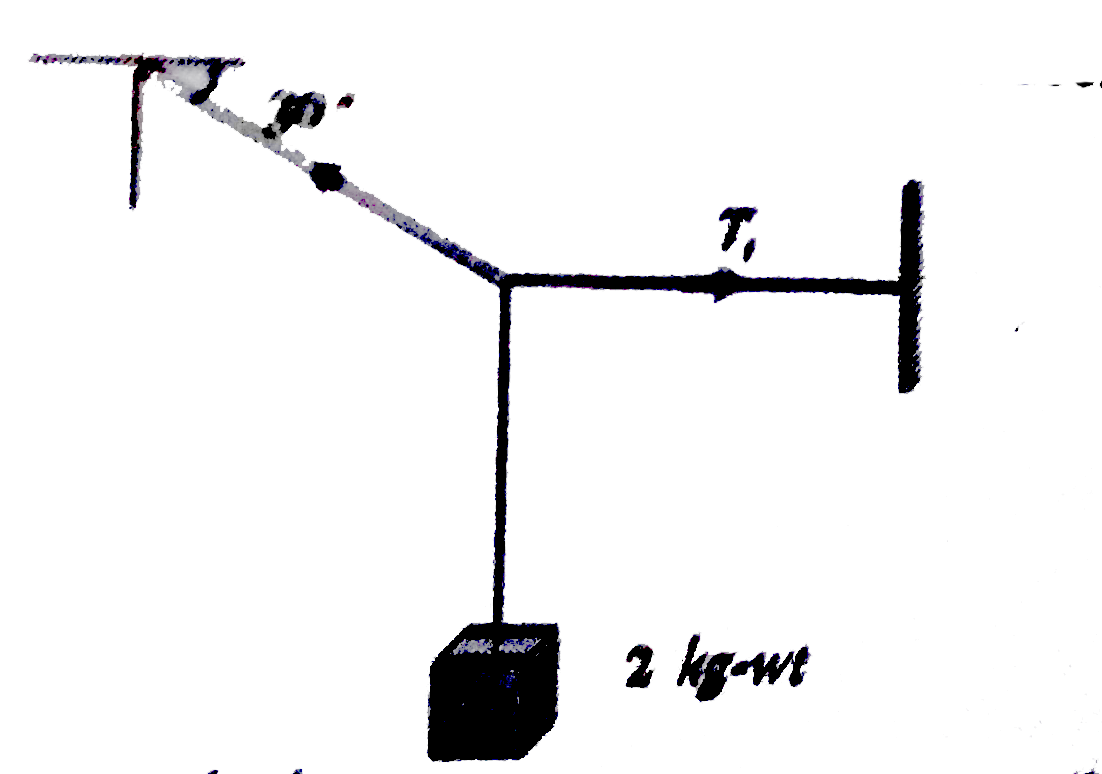A physical balance has its arms of unequal length. A body weight 18 kg if kept in one pan and weight 8 kg. If kept in the other pan. The true weight of the body is
13 kg
12 kg
10 kg
16 kg
The correct Answer is:B
To find the true weight of the body using the information given about the physical balance with unequal arms, we can follow these steps:
1. Understanding the Problem:
- We have a physical balance with two pans of unequal lengths.
- When an 18 kg weight is placed in one pan, it balances with the unknown weight (W) in the other pan.
- When an 8 kg weight is placed in the other pan, it also balances with the same unknown weight (W).
2. Convert Weights to Forces:
- The force due to the weights can be calculated using the formula:
Force=mass×g
- Assuming g=10m/s2:
- Force when 18 kg is used:
F1=18kg×10m/s2=180N
- Force when 8 kg is used:
F2=8kg×10m/s2=80N
3. Setting Up Torque Equations:
- For the first case (18 kg):
180N×L1=W×L2
- For the second case (8 kg):
W×L1=80N×L2
4. Expressing Ratios:
- From the first equation:
L1L2=W180
- From the second equation:
L1L2=80W
5. Equating the Two Ratios:
- Since both expressions are equal to L1L2:
W180=80W
6. Cross-Multiplying:
- Cross-multiplying gives:
W2=80×180
7. Calculating W:
- Calculate 80×180:
80×180=14400
- Taking the square root:
W=√14400=120N
8. Finding the True Weight in kg:
- To convert the weight back to mass (in kg):
True Weight (mass)=120N10m/s2=12kg
Final Answer:
The true weight of the body is 12 kg.
---
- We have a physical balance with two pans of unequal lengths.
- When an 18 kg weight is placed in one pan, it balances with the unknown weight (W) in the other pan.
- When an 8 kg weight is placed in the other pan, it also balances with the same unknown weight (W).
- The force due to the weights can be calculated using the formula:
Force=mass×g
- Assuming g=10m/s2:
- Force when 18 kg is used:
F1=18kg×10m/s2=180N
- Force when 8 kg is used:
F2=8kg×10m/s2=80N
- For the first case (18 kg):
180N×L1=W×L2
- For the second case (8 kg):
W×L1=80N×L2
- From the first equation:
L1L2=W180
- From the second equation:
L1L2=80W
- Since both expressions are equal to L1L2:
W180=80W
- Cross-multiplying gives:
W2=80×180
- Calculate 80×180:
80×180=14400
- Taking the square root:
W=√14400=120N
- To convert the weight back to mass (in kg):
True Weight (mass)=120N10m/s2=12kg
The true weight of the body is 12 kg.
Similar Questions
A physical balance has its arms of length 60cm and 40cm. What weight kept on the pan of the longer arm will balance an object of weight 100 gf kept on the other pan?
View SolutionThe two arms of a balanced are of unequal length. An object when placed in the left pan of the balance weighs 4 kg. The same object when placed in the right pan of the balance weighs 9 kg. The actual (or) true mass of the object is
View Solution
Knowledge Check
A body of weight W is floating in a liquid. Its apparent weight will be :
Aequal to WBless than WCgreater than WDzero
The weight of a body in water is one third of its weight in air. The density of the body is
View SolutionA body of density d is counterpoised by Mg of weights of density d1 in air of density d. Then the true mass of the body is
View SolutionA bady increases in weight from 5.58 kg to 6.16 kg . How much weight has the bady gained ?
View SolutionA body weighs 6gms when placed in one pan and 24gms when placed on the other pan of a false balance. If the beam is horizontal when both the pans are empty, the true weight of the body is :
View SolutionThe mass of a body is 20-0 kg. Taking the pull of gravity on mass 1 kg equal to 10 N, express the weight of the body in kgf .
View SolutionA beam balance of unequal arm length is used by an unscruplus trader. When an object is weighed on left pan. The weight i found to be W1. When the object is weighed on the right plane, the weight is found to be W2. If W1≠W2, the correct weight of the object is
View SolutionA body of weight 2 kg is suspended as shown in the figure. The tensionT1 in the horizontal string (in kg wt ) is

View Solution
